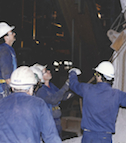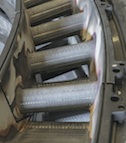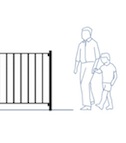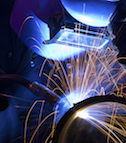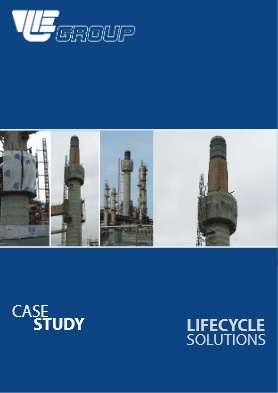Concrete Built is Better Built!

Precast concrete wall systems can be comprised of a variety of shapes, and wall types. Typically, precast concrete wall systems fall into three basic categories: solid, sandwich and thin-shell. These can be panelized and erected in either a horizontal or vertical position and used on all types of structures from residential to commercial, institutional to industrial. Wall panels can be designed as nonloadbearing or loadbearing, carrying floor and roof loads, as well as lateral loads.
Solid Walls
Solid wall panel simply refers to walls being made of solid concrete as opposed to including integral insulation. These wall systems require some form of insulation and an interior wall/finishing system to complete the building enclosures.
Typical widths: 1.2m to 4.5m
Typical heights: 3m to 12m
Typical thicknesses: 120mm to 500mm
Finishes: Since wall panels are cast in a flat orientation, the form side is typically the side that will be exposed to view in the final construction achieving an off-form class 2 finish. This face can be made with virtually any type of finish. The back face is typically troweled smooth or may have a light broom finish.
Typically, the interior does not need additional furring and drywall to create the finished surface.
Sandwich Walls
Insulated sandwich wall panels can be strictly architectural, strictly structural, or a combination of both. The difference between typical panels and insulated sandwich wall panels is that the latter are cast with rigid insulation "sandwiched" between two layers, or wythes, of concrete. The insulation thickness can vary to create the desired thermal insulating property ("R" value) for the wall.
The structural behavior is either:
Composite in which the wythes are connected using ties through the insulation that fully transfer loads. The structural performance is then based on the full thickness of the panel; or
Non-Composite in which the wythes are connected using ties through the insulation, which limits performance to the individual capacities of each wythe.
Whether the panel is composite or non-composite depends on the configuration and material used for the ties. Insulated sandwich wall panels can be designed to be loadbearing and support floor and roof components. They make an ideal structural element for this purpose, typically by casting a thicker interior wythe to provide the necessary support. They can also be non-loadbearing to complete a façade.
Finishes: As with typical wall panels, the panels are cast in a flat orientation, so the form side is typically the side that will be exposed to view in the final construction. This face can be made with virtually any type of finish. GFRC panels allow for great aesthetic details and extensions such as cornices, due to the manufacturing process. The back face is typically troweled smooth, but is not left exposed. The back-up systems are often used to attach drywall and/or other finish materials.
Typical widths: 1.2m to 4.5m
Typical heights: 3m to 12m
Typical thicknesses: 120mm to 500mm
Lite Walls
Light or "lite" walls are shear walls used in parking structures cast with an opening in their center to provide visual continuity and to allow daylight or artificial illumination to penetrate deeper into an interior. The components provide openness and a feeling of security. These components should not be confused with "light wells," which are internal, open courtyards designed to provide daylight to the center of parking structures and other buildings.
As with other types of shear walls, lite walls serve as the lateral force-resisting systems in the structure. They act as cantilever beams, transferring lateral forces acting parallel to the face of the wall, from the superstructure to the foundation.
Supply and Installation of Steel Support Columns, 178 Precast Wall Panels and Paint. Night Time Installation under Traffic Control

Supply and Installation of Bondek Floor System including Propping Design, Supply-Tie-Place Steel and Concrete Finish

Supply and Installation of 32 Independant Living Units, Suspended Bondek Floor Slabs and Roof Systems Within 9 Month Construction Window

Design, Supply and Installation of Face Column Fit Precast Retaining Wall System Including Structural Steel for Either Privacy or Bank Stabilisation

Turn Key Industrial Warehouse Construction, Excavation, Piering, Ground Slabs, Tilt Up Panel Supply and Install Including All Strucutral Steel

Delivery, Installation and Finish of Precast Wall Panels, Bondek Floor System and Structural Steel Roofs for Stage 1 Display Units mt Gibraltar Park Bowral







